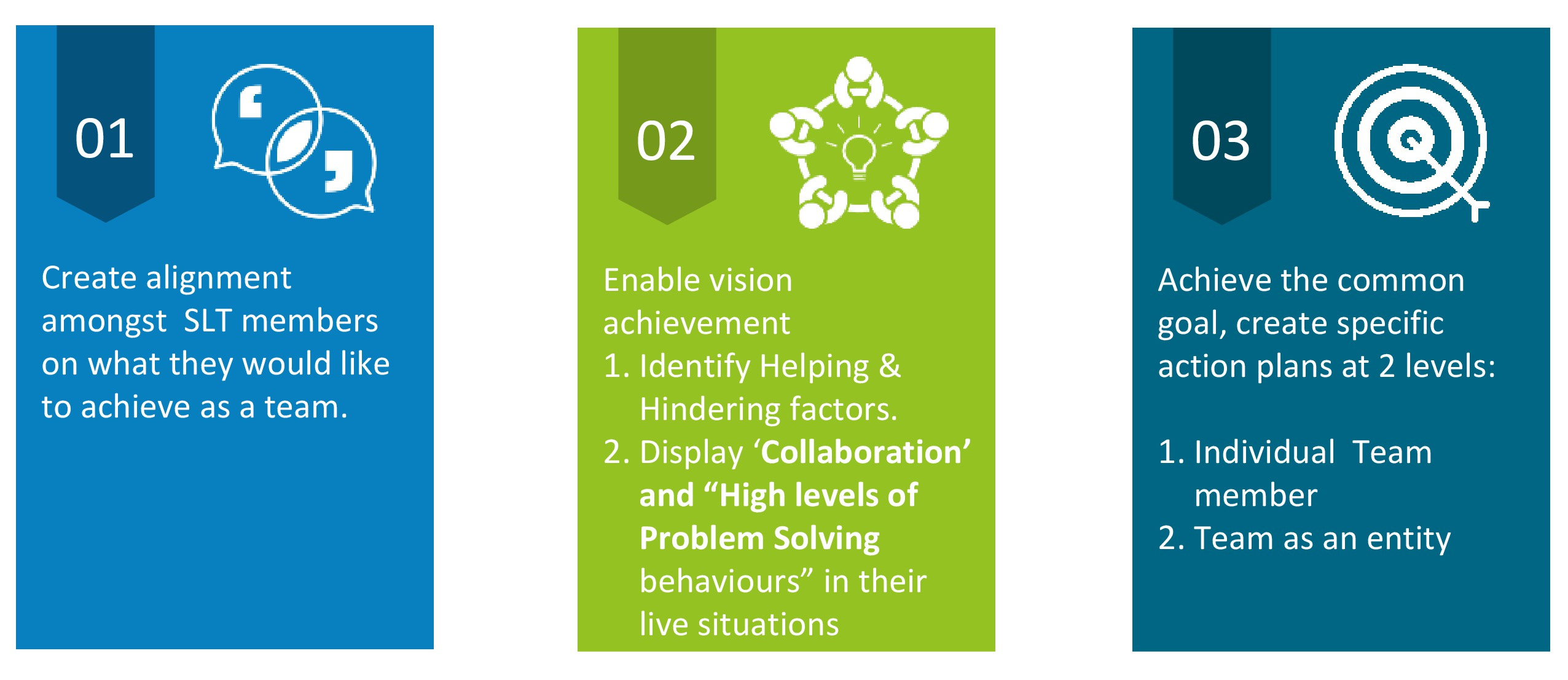Overview
In today’s global landscape and flatter hierarchies, long-term success of the organisation depends on the whole leadership team, rather than ‘one charismatic leader’. A poorly aligned top team breeds competing agendas and turf politics; whereas a high-performing one ensures organisational coherence and focus.
According to a McKinsey survey, only 20% of executives believed that their team was a high-performing one. When the top team does not work in collaboration and harmony, it can lead to a large amount of value destruction for the organisation.
InspireOne brings extensive experience in conducting interventions that develop supportive, inclusive, and collaborative behaviors in top team members. We use patented team interaction process which is built to enable team members to move away from defending own ideas and thoughts to building common understanding and achieving maximum results i.e. a shift from “I” to “we” thinking.
Team Interaction Process is a highly validated application model based on scientific observation of more than 100 teams over a period of several months. The process focuses on the following objectives:
- Fundamental behavior change and improved problem-solving for individuals and the team.
- Team development using real, powerful and relevant business scenarios.
- A new way of operating and team processes, which can be cascaded through business.
- Key behaviors which are crucial for building a strong culture of collaboration.
Challenges Faced by Senior Leadership Teams vis-à-vis Vision Alignment, Systemic Thinking & Collaborative Working
our work with multitude of organisations over the past 2 decades in India, combined with our research of more than 30 years through our global networks, InspireOne has identified critical issues that are usually encountered by Senior Leadership Teams.
- Not completely aligned to the vision and strategy
- Insufficient buy-in to the common goals and strategy
- We function like a group of individuals rather than a team
- We are unclear on which goals are common; hence interdependencies are unclear
- We understand the merit in collaboration but we don’t know to work collaboratively
- There are peers that I don’t get along with. This leads to professional repercussions
- Clashing personal styles, creates dysfunctionality – an inability to work through diverse viewpoints
Note: The abovementioned challenges are only presented as examples. The issues faced by Senior Leadership Teams are specific to its organization
Objectives and Success Measures for phase 1
Objectives:
- Aligning the top team to the Vision and Growth Strategy.
- Creating a systemic thinking, collaborative and energised team
Success Measures
- Lead Measures:
- Alignment and engagement of the entire unit to the vision.
- Clarity on the role each person plays to bring the vision to life.
- Building levels of collaboration that encourage systemic decision making and problem solving
- Lag measures:
- All measurement indicators of the vision being achieved in the stated time lines.
The specific success measures are set by the leadership team in Phase 1
Critical Success Factors
The success indicators for visions are as follows
Our solution design is constructed to support individual team members to come together as a single entity for achieving the vision

As-is-state assessment and articulation of desired state
1:1 Interviews with each SLT member to identify helping & hindering factors in achievement of common vision
Individual assessment & 1:1 Feedback
- Individual Assessments Explore own profile in the context of vision deployment, achievement and enabling behaviors
- Individual behaviours and action plans

2 day workshop and workout (Offsite) for the SLT – vision alignment and cohesive working and CSF
Using team data, facilitation Team Interaction Process – for the Senior Leadership Team to:
- Align team via-a-vis understanding of the vision
- Agree on terms of engagement
- Identify commitment plans to achieve vision

Find out more about developing the skills for yourself, your team and your organisation




